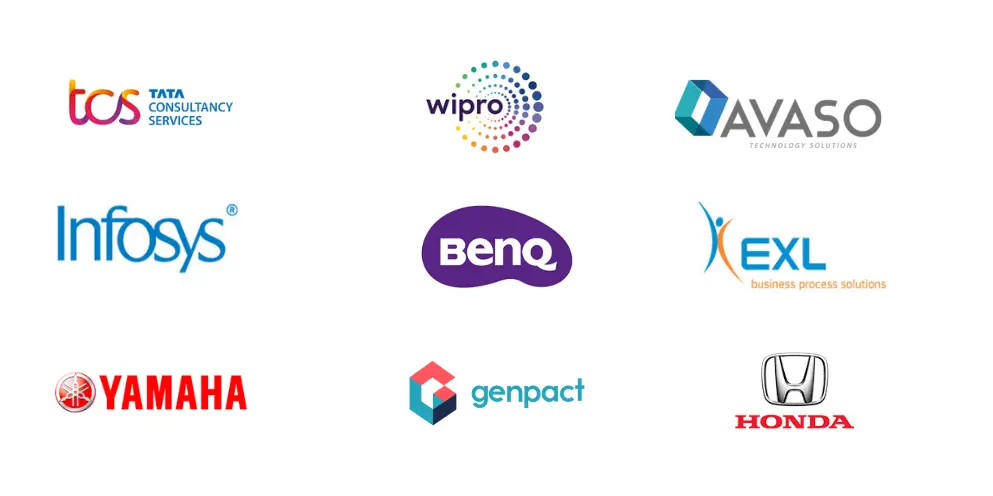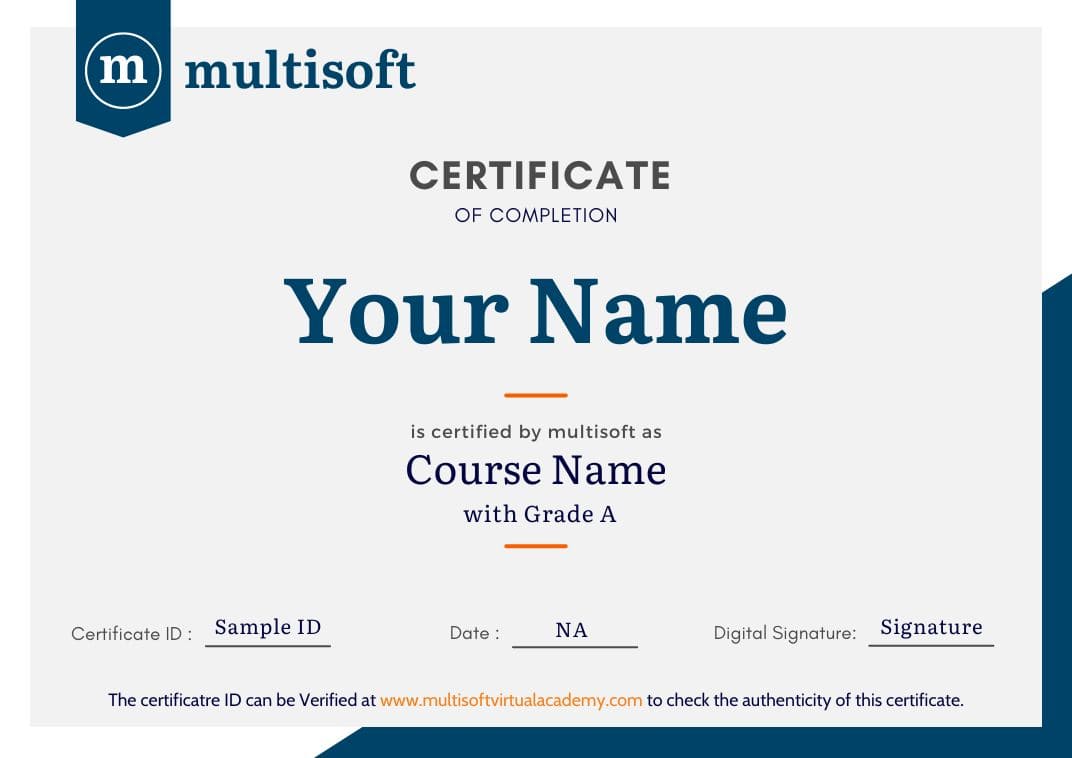Trusted by enterprises across the globe


Designed for all your training needs

Flexible On-Demand Group Learning
Flexible, corporate learning for groups, accessible anytime, anywhere.

Instructor-Led Live, Online Training
Real-time, interactive classes taught by SME via web conferencing.

Independent Self-Paced Learning
Individual learning at your own speed, with access to digital materials.

Customized On-Site Training
Customized, face-to-face training sessions delivered at your location.
Curriculum Designed by Experts
Multisoft Virtual Academy offers Google Cloud Platform Contact Center AI Corporate Training designed to help enterprises revolutionize their customer service operations. This training provides hands-on experience with Contact Center AI, Dialogflow, and other GCP tools to develop intelligent, responsive, and scalable virtual agents.
Tailored for corporate teams, the course covers conversational design, agent assist, natural language understanding (NLU), and integration techniques. Professionals learn to reduce operational costs, increase resolution efficiency, and deliver consistent, 24/7 customer support. Taught by industry experts, the training includes real-world use cases, live sessions, and flexible scheduling—making it ideal for modern business environments.
Upskill your workforce and bring AI transformation to your contact center today!
Google Cloud Platform - Contact Center AI training is a specialized course that teaches professionals how to use Google Cloud’s AI tools—like Dialogflow, Speech-to-Text, and Agent Assist—to create intelligent virtual agents. It helps automate customer support, enhance user experience, and optimize contact center operations. This training equips learners with the skills to build, deploy, and manage AI-driven solutions across voice and chat channels for modern customer service environments.
- Define what Contact Center AI (CCAI) is and what it can do for contact centers
- Identify each component of the CCAI Architecture: Speech Recognition, Dialogflow, Speech Synthesis, Agent Assist, and Insights
- Describe the role each component plays in a CCAI solution
- List the basic principles of a conversational experience
- Explain the role of conversation virtual agents in a conversation experience
- Articulate how STT (speech to text) can determine the quality of a conversation experience
- Demonstrate and test how speech adaptation can improve the speech recognition accuracy of the agent
- Recognize the different NLU (natural language understanding) and NLP (natural language processing) techniques and the role they play in conversation experiences
- Explain the different elements of a conversation (intents, entities, etc.)
- Use sentiment analysis to help with the achievement of a higher-quality conversation experience
- Improve conversation experiences by choosing different TTS voices (Wavenet vs. Standard)
- Modify the speed and pitch of a synthesized voice
- Describe how to leverage SSML to modify the tone and emphasis of a synthesized passage
- Identify user roles and their journeys
- Write personas for virtual agents and users
- Model user-agent interactions
- List the basic elements of the Dialogflow user interface
- Build a virtual agent to handle identified user journeys
- Train the NLU model through the Dialogflow console
- Define and test intents for a basic agent
- Train the agent to handle expected and unexpected user scenarios
- Recognize the different types of entities and when to use them
- Create entities
- Define and test entities on a basic agent
- Implement slot filling using the Dialogflow UI
- Describe when Mega Agent might be used
- Demonstrate how to add access to a knowledge base for your virtual agent to answer customer questions straight from a company FAQ
- Create follow-up intents
- Recognize the scenarios in which context should be used
- Identify the possible statuses of a context (active versus inactive context)
- Implement dialogs using input and output contexts
- Describe two ways that the media type changes the conversation
- Configure the telephony gateway for testing
- Test a basic voice agent
- Modify the voice of the agent
- Show how the different media types can have different responses
- Consider the modifications needed when moving to production
- Be aware of the telephony integration for voice in a production environment
- Define the role of fulfillment with respect to Contact Center AI
- Characterize what needs to be collected in order to fulfill a request
- Identify existing backend systems on the customer infrastructure
- Use Firestore to store mappings returned from functions
- Appreciate that the interaction with customers’ data storage will vary based on their data warehouses
- Implement fulfillment using Cloud Functions
- Implement fulfillment using Python on AppEngine
- Describe the use of Apigee for application deployment
- Debug a virtual agent by testing intent accuracy
- Debug fulfillment by testing the different functions and integrations with backend systems through API calls
- Implement version control to achieve more scalable collaboration
- Log conversations using Cloud Logging
- Recognize ways that audits can be performed
- Recognize use cases where Agent Assist adds value
- Identify, collect, and curate documents for knowledge base construction
- Set up knowledge bases
- Describe how FAQ Assist works
- Describe how Document Assist works
- Describe how the Agent Assist UI works
- Describe how Dialogflow Assist works
- Describe how Smart Reply works
- Describe how real-time entity extraction works
- Analyze audio recordings using the Speech Analytics Framework (SAF)
- Use the Dialogflow API to programmatically create and modify the virtual agent
- Describe connectivity protocols: gRPC, REST, SIP endpoints, and phone numbers over PSTN
- Replace existing head intent detection on IVRs with Dialogflow intents
- Describe virtual agent integration with Google Assistant
- Describe virtual agent integration with messaging platforms
- Describe virtual agent integration with CRM platforms (such as Salesforce and Zendesk)
- Describe virtual agent integration with enterprise communication platforms (such as Genesys, Avaya, Cisco, and Twilio)
- Explain the ability that telephony providers have of identifying the caller and how that can modify the agent design
- Incorporate IVR features in the virtual agent
- Create Draft and Published versions of your virtual agent
- Create environments where your virtual agent will be published
- Load a saved version of your virtual agent to Draft
- Change which version is loaded to an environment
- Describe two ways that security can be implemented on a Contact Center AI integration
- Identify current compliance measures and scenarios where compliance is needed
- Convert pattern matching and decision trees to smart conversational design
- Recognize situations that require escalation to a human agent
- Support multiple platforms, devices, languages, and dialects
- Use Diagflow’s built-in analytics to assess the health of the virtual agent
- Perform agent validation through the Dialogflow UI
- Monitor conversations and Agent Assist
- Institute a DevOps and version control framework for agent development and maintenance
- Consider enabling spell correction to increase the virtual agent's accuracy
Free Career Counselling
We are happy to help you 24/7Multisoft Corporate Training Features
Outcome centric learning solutions to meet changing skill-demand of your organizationWide variety of trainings to suit business skill demands
360° learning solution with lifetime access to e-learning materials
Choose topics, schedule and even a subject matter expert
Skilled professionals with relevant industry experience
Customized trainings to understand specific project requirements
Check performance progress and identify areas for development
Free Google Cloud Platform Contact Center AI Corporate Training Assessment
Right from the beginning of learning journey to the end and beyond, we offer continuous assessment feature to evaluate progress and performance of the workforce.
Try it Now

Google Cloud Platform Contact Center AI Corporate Training Certification
Related Courses
A Role Based Approach To Digital Skilling
A roadmap for readying key roles in your organization for business in the digital age.
 Download Whitepaper
Download Whitepaper












 Join our Live Instructor-Led online classes delivered by industry experts
Join our Live Instructor-Led online classes delivered by industry experts